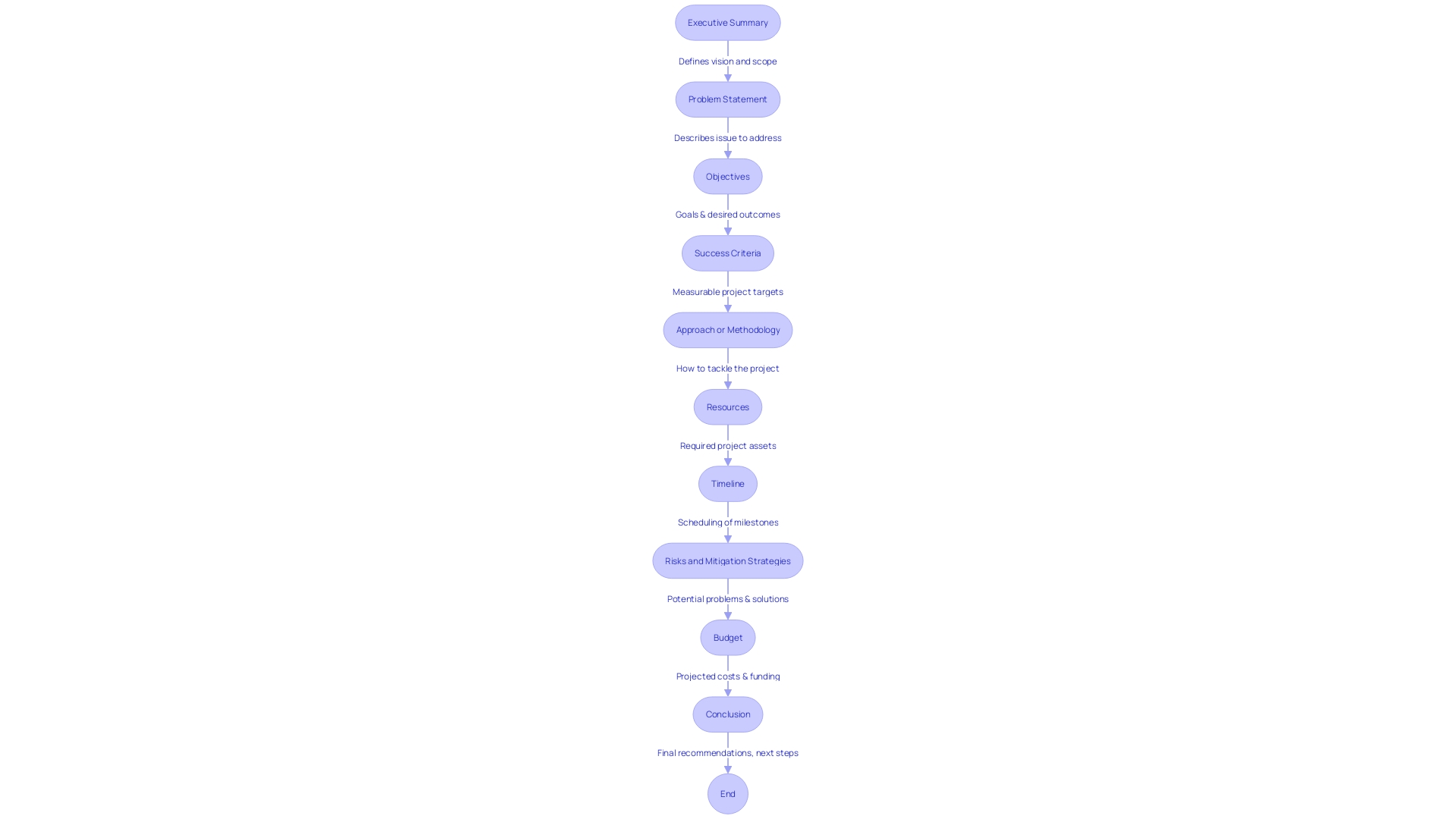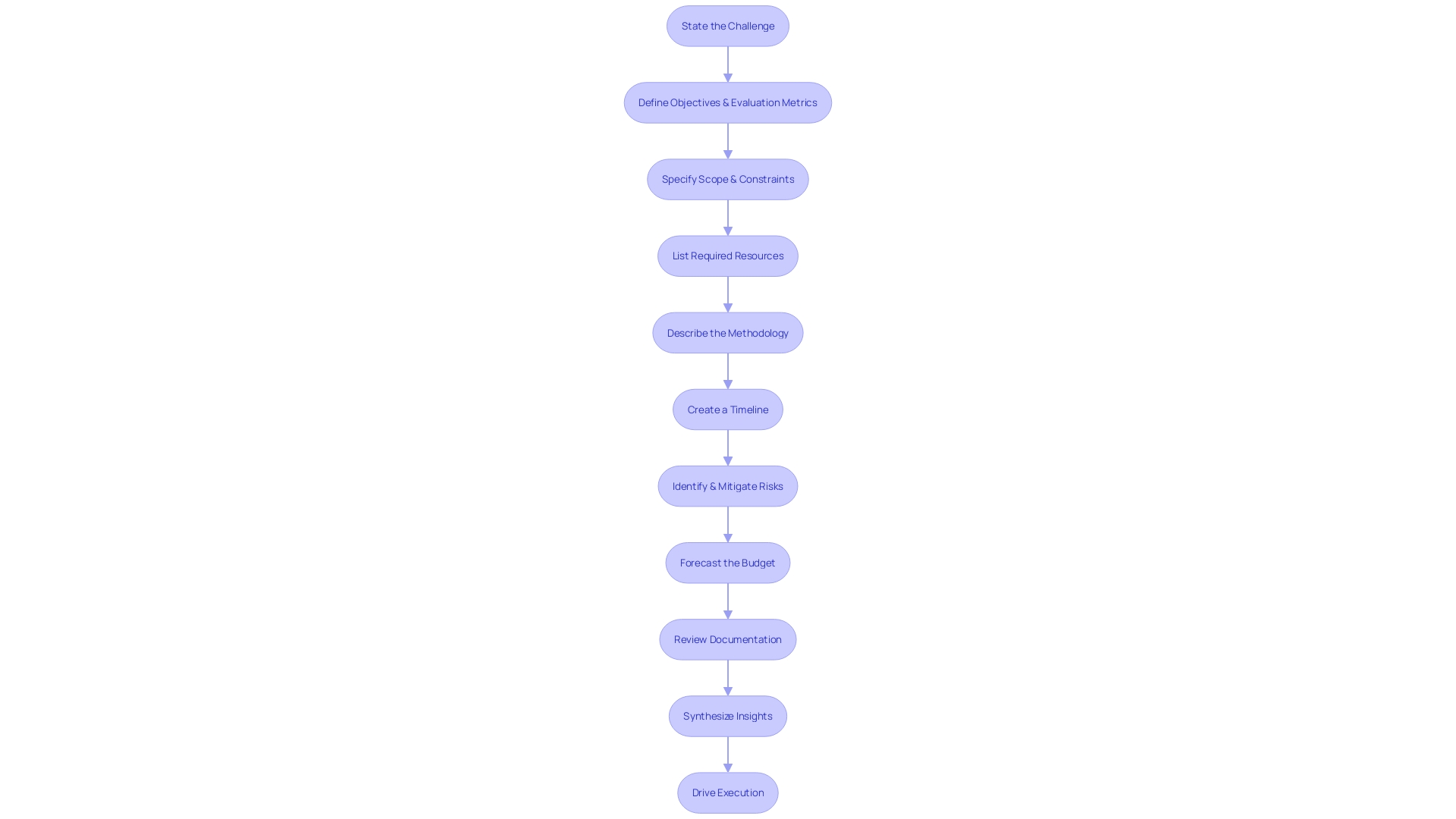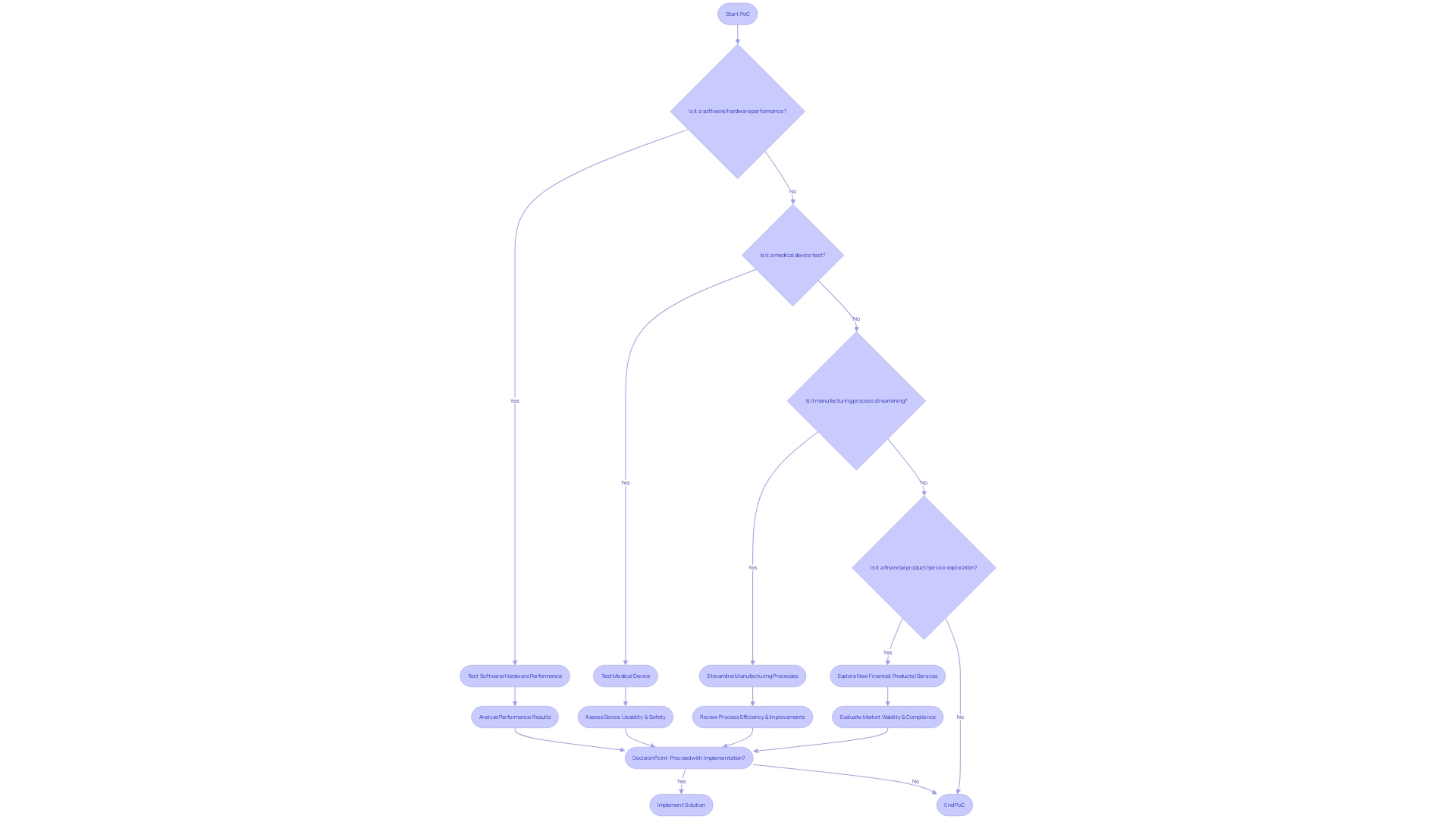Introduction
Crafting comprehensive Proof of Concept (POC) documentation is a foundational element in assessing a business IT project's feasibility and effectiveness. It functions as a granular blueprint, delineating the project's objectives, requirements, and anticipated results. POC documentation demystifies the issue at hand, delineates the resources needed, establishes the criteria for success, and frames the project's scope and timeline.
Evidently, a POC is more than just a cursory demonstration; it is a vital endeavor that ascertains a problem can indeed be addressed by the proposed solution. Regardless of whether introducing new offerings or expanding on existing services, POCs remain instrumental. In this article, we will explore the importance of Proof of Concept documentation in IT projects, the key elements it should include, a step-by-step guide to writing effective POC documentation, examples of POC in different industries, and common mistakes to avoid.
By following this expert advice, you can enhance the success rate of your IT initiatives and drive innovation with confidence.
What is Proof of Concept Documentation?
Crafting comprehensive Proof of Concept (POC) documentation is a foundational element in assessing a business IT project's feasibility and effectiveness. It functions as a granular blueprint, delineating the project's objectives, requirements, and anticipated results. POC documentation demystifies the issue at hand, delineates the resources needed, establishes the criteria for success, and frames the project's scope and timeline.
Evidently, a POC is more than just a cursory demonstration; it is a vital endeavor that ascertains a problem can indeed be addressed by the proposed solution. Regardless of whether introducing new offerings or expanding on existing services, POCs remain instrumental.
Take, for instance, Dectar, a developer of both internet exposure assessment and cyber defense products. Initially, its documentation—handled by the Support Team—was ad hoc, which led to inefficient, time-consuming release processes. By assigning dedicated ownership over documentation, the company aimed to streamline support team workflows, demonstrating the organizational value POC documentation provides.
Similarly, gathering user requirements through use cases, as elucidated by Alistair Cockburn, has proven foundational, ultimately aiding in bridging the gap between business and engineering.
In a stark reminder of cybersecurity's significance, the recent barrage of ransomware attacks on U.S. critical infrastructure amplifies the importance of rigorously documented POCs in mitigating risks in IT projects. Notably, this need for meticulous documentation aligns with the functional requirements in software development that detail the 'what' of a system: the behaviors, features, and capabilities essential for alignment with stakeholder needs and business objectives. The POC documentation, therefore, is not just a formality; it's a strategic asset that guides teams from inception to successful implementation, ensuring that every software solution launched is robust, meets user expectations, and is primed for success in the real world.

Why is Proof of Concept Documentation Important?
Implementing an IT Proof of Concept (POC) provides a critical evaluation and testing phase before committing to full-scale development. Systematic documentation during this phase serves multiple strategic functions:
-
Feasibility Testing: Documentation reaffirms the capabilities of your solution to address the identified problems. It is the crucible where your project is tested against real-world scenarios, much like how Dropbox demonstrated its utility early on.
-
Risk Assessment: Early documentation and testing reveal potential pitfalls—whether they're operational, financial, or technical in nature, similar to case studies where adjusting strategies based on POC findings significantly improved desired outcomes, like increased conversion rates.
-
Unified Vision: Clear documentation is a linchpin for aligning stakeholder expectations. By setting out objectives and success criteria, all parties gain a shared understanding of the project goals.
-
Efficiency Optimization: Effective POC documentation can identify redundancies and streamline processes, contributing to optimized resource allocation and ensuring that effort is concentrated where it's most impactful.
-
Value Validation and Next Steps: As you reach the decision gates of your project, POC documentation offers a structured approach for assessing success and deciding on continuation or modification of your proposed IT solution. It acts similarly to a test plan in software development, where test cases provide concrete data points for decision-makers.
In the context of our industry, embracing structured POC documentation is akin to applying engineering principles to technical writing; it elevates the management, tracking, and benchmarking of development productivity, as pointed out by McKinsey. With such documentation in place, a project can avoid becoming part of the statistic that CBInsights highlights—those failing due to inadequate market need validation. By starting with a well-documented POC, organizations set the stage for success and avoid the pitfalls that ensnare many.
Elements of Proof of Concept Documentation
A solid Proof of Concept (PoC) serves as the blueprint for a business IT project, providing a detailed roadmap from inception to execution. It begins with an Executive Summary, a succinct synthesis of the project with its goals and anticipated results, much like Doctor's approach when they sought to streamline their documentation process, elevating the efficiency of their support team as a byproduct. The Problem Statement delves into the issue or chance the project tackles, akin to Vodafone addressing the burgeoning IoT and generative AI market by partnering with Microsoft to revolutionize customer experiences.
The Objectives section pins down the precise aims the project intends to achieve, ensuring that the scope is well defined in terms of features, functionalities, and limitations. Success Criteria follow suit, establishing concrete benchmarks or metrics to gauge the project's outcomes.
In the methodological chapter, you outline the Approach or Methodology employed to carry out the PoC, including steps like gathering requirements through use cases, as elucidated by Alistair Cockburn. The Resources section encompasses a catalog of prerequisites such as hardware, software, and personnel, essential for the project's fruition.
A delineated Timeline with critical milestones and deliverables ensures that every phase of the project is meticulously planned, while the Risks and Mitigation Strategies segment anticipates potential hurdles and formulates preemptive countermeasures.
Concerning finances, the Budget provides a projection of the monetary resources indispensable for the project's success. And finally, the PoC culminates in the Conclusion, which aggregates the principal revelations and counsel derived from the experiment.
Reflecting on POC's pertinence, the digital world has seen entities like Dropbox validate the market's demand for their offerings even before extensive launches. This meticulous planning and proofing process not only accelerates performance but also guarantees that pivotal questions related to the development, purpose, and function of the software are explicitly addressed and answered, ensuring a firm grounding and clear direction for the project.

Step-by-Step Guide to Writing Proof of Concept Documentation
Creating proof of concept (POC) documentation is pivotal for testing the viability of IT projects before they are fully deployed. Here's a comprehensive guide to formulating effective POC documentation:
-
Stating the Challenge: It's essential first to clarify the issue or opportunity your project is tackling. This includes providing the necessary background and detailing why it's important to address this problem.
-
Objectives and Evaluation Metrics: Clearly define what the project intends to achieve and establish the metrics or criteria that will gauge its success.
-
Scope and Constraints: Detail the boundaries of your project. Specify what features and functionalities will be included, as well as any constraints or limitations that may impact the outcome.
-
Resource Inventory: List all necessary hardware, software, and human resources required to execute your POC.
-
Methodology Overview: Describe the POC's process, including the steps to be taken and any specific methods or frameworks that will be applied to ensure goals are met efficiently and effectively.
-
Timeline Construction: Lay out a timeline with significant milestones and deadlines to keep the project on course.
-
Risk Management: Identify possible project risks along with strategies to mitigate them, ensuring uninterrupted progression.
-
Budget Forecast: Calculate an estimated budget for the project, considering various factors such as personnel, technology costs, and other pertinent expenses.
-
Documentation Review: Reassess your POC documentation for clarity, consistency, and thoroughness, making adjustments as necessary based on stakeholder feedback.
-
Synthesizing Insights: Sum up the POC's findings, accentuating the insights gained and the potential next steps following the experiment.
Using real-world case studies as references can be insightful. For instance, a hotel company heightened their bookings by implementing foundational tools like Google Analytics before running PPC campaigns, and another case involved choosing an efficient technical stack, such as Django and Tailwind, to boost user experience and SEO results. Recent news highlights the ongoing threat of cybersecurity incidents, emphasizing the importance of POCs in testing security solutions.
Current statistics suggest the increasing adoption of concepts like home automation, underlying the growing relevance of POCs in the IT landscape. As outlined, the aim is to drive execution with a laser focus, underpinned by a scrappy mindset to innovate and validate technological applications with a forward-looking approach.

Examples of Proof of Concept in Different Industries
A Proof of Concept (PoC) is an essential preliminary step that enables businesses across various sectors to evaluate the practicality and potential of their innovative ideas. For instance, in the technology realm, a PoC helps verify new software or hardware against benchmarks of performance, functionality, and cybersecurity, ensuring these aspects align with strategic goals before full-scale deployment.
In healthcare, where patient safety and treatment effectiveness are paramount, Pics play a critical role in testing medical devices and therapies. This step is indispensable in confirming their implications for health outcomes prior to large-scale clinical use.
Manufacturing industries utilize PoCs to streamline processes and explore new production methods or technologies. Through PoCs, they can simulate the integration of novel machinery or automation systems and forecast their impact on efficiency and productivity.
Financial institutions leverage Pics to explore the viability and benefits of fresh financial products or services. It allows them to gauge the effects of innovative fintech solutions or business models before rolling them out market-wide.
Real-world applications of PoCs can be seen in cases like Rivian, an electric vehicle manufacturing company. Their PoC projects contribute to achieving sustainable operations, adhering to their commitment to zero emissions by 2040. They navigate the challenges of distributed teams and various operational sites through PoCs to streamline design and manufacturing processes, thereby optimizing talent distribution and minimizing environmental impact.
Similarly, in the technology consulting industry, where staying at the cutting edge is crucial, PoCs facilitate the integration of strategies and the development of adaptable, impactful digital solutions. As rapid innovation continues, such as the integration of AI in Industry 4.0, Pics support the relentless pace of technological advancement, ensuring that innovations like home automation using IoT remain effective, secure, and beneficial.
PoCs, therefore, act as a strategic tool across industries to test, validate, and refine projects, ultimately guiding businesses towards successful implementations that align with their long-term objectives and environmental commitments.

Common Mistakes to Avoid in Proof of Concept Documentation
To effectively leverage a Proof of Concept (POC) for IT projects and enhance the likelihood of success, it is crucial to address common pitfalls in the POC documentation process. Providing clarity is fundamental; articulate the problem statement, objectives, and desired outcomes with precision to prevent confusion among the team and stakeholders. Planning should not be overlooked—it lays the foundation for the entire POC, detailing methodology, timeline, resources, and potential risks.
Speaking of risks, neglecting to recognize and prepare for potential issues can derail even the most promising projects. Inclusive stakeholder engagement offers vital insights and facilitates decision-making processes—ensuring everyone affected by the project has a voice. Lastly, thorough documentation is indispensable for maintaining a clear record of the POC, aiding both knowledge transfer and future endeavors.
Equipped with examplary case studies, such as the implementation of a technical stack involving Django, Tailwind, HTMX, and constructing a content roadmap based on SEO analysis, provides tangible demonstrations of these principles in action. For instance, Dr. Aamir Hussain of De Montfort University showcases how creating a supportive environment for research data management—with limited resources—can foster a flourishing community. Similarly, recognizing and establishing foundational tools like Google Analytics and Conversion Tracking proved crucial for a hotel company looking to amplify their bookings.
The insights of industry leaders like Mike Kasparian of Forrester emphasize the importance of adequate preparation, stakeholder communication, and adapting to new challenges in IT project management. The POC process draws from this wisdom, underscoring the importance of robust planning and clear communication.
Aligning with agile methodologies, it's important to treat the POC as an anticipatory approach, much like 'spiking' in rock climbing where safety is strategically embedded into the process to ensure progress and protection from setbacks. In the context of a POC, 'Spikes' refer to time-boxed efforts aimed at dispelling uncertainties, which could involve coding sprints or comprehensive research.
Backing the utility of POCs, statistics show a doubling in the use of Advanced Reproductive Technology (ART) over the past decade. Although this is not directly related to IT, it exemplifies the growth potential of methodologies that start with a proof of concept.
By avoiding these common mistakes and integrating lessons learned from real-world scenarios, your POC documentation can be a vital step toward the successful realization of IT initiatives.
Conclusion
In conclusion, Proof of Concept (POC) documentation is vital for assessing the feasibility and effectiveness of IT projects. It serves as a detailed blueprint, outlining objectives, requirements, and anticipated results. POC documentation demystifies the issue at hand and establishes success criteria and timelines.
Implementing a POC provides strategic advantages such as feasibility testing, risk assessment, unified vision, efficiency optimization, and value validation. Clear documentation aligns stakeholder expectations and guides teams throughout the project.
The key elements of POC documentation include the executive summary, problem statement, objectives, success criteria, methodology, resources, timeline, risks, budget, and conclusion. Following a step-by-step guide ensures thorough planning and clarity.
Real-world examples across industries highlight the importance of POCs. They facilitate testing, validation, and refinement of projects, allowing informed decision-making and successful implementations.
Avoiding common mistakes in POC documentation is crucial. This includes addressing clarity, planning, risk management, stakeholder engagement, and thorough documentation.
By embracing the POC process and considering these recommendations, organizations can drive innovation and confidently implement projects that meet user expectations and business objectives. POC documentation is the foundation for successful IT initiatives.





